OREGON FARMERS ARE OLD AND CRUSTY people, and older and crustier if you believe the census figures. The average age of the Oregon farmer jumped to 60 in 2012 from 55 from the U.S. Department of Agriculture census ten years before that.
Further, we’re losing traditional farmland to development. Over the past fifteen years, 1.3 million acres have lost their farmland designation. The number of family farms, too, fell by 16 percent over the past ten years.
Numbers don’t always tell the full story, so we talked to Katy Coba, the director of the Oregon Department of Agriculture, to find out what is going on. The state agency’s role generally covers three areas: food safety, protecting farmland from development, and marketing Oregon agriculture products at home and abroad.
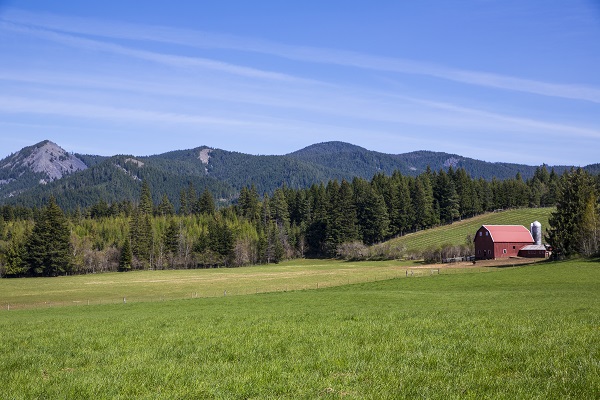
by Joni Kabana
Coba said that while there is definitely reason to be concerned about the aging of the Oregon farmer, the statistics could be skewed toward grandpa, who’s still considered the head of the farm even though his children and grandchildren are essentially running the operation. Had that not been the case in prior census years?
Coba, who grew up on a wheat farm outside of Pendleton, also said that her department does its best to keep farmland for farmers. Oregon land-use laws are explicit in maintaining the separation of farms and development. Even so, farmland is shrinking. She cited Washington County, Southern Oregon and Central Oregon as areas where farmland faces the most pressure from encroaching development.
Nonetheless, there is an upside. “Oregon is the best place to start farming without a doubt,” said Coba. “We have the resources within the state. We have a great land-grant university at Oregon State that provides a lot of education and support for agriculture. Expect to work your tail off because that’s what farmers and ranchers do in Oregon.”
In the end, we decided to head out to farms across Oregon to find the breed of Oregonian that is quickly and quietly going extinct—young farmers.
THE FAMILY TREE
Trout Creek Orchard | Parkdale
The call to return to the family farm doesn’t always have the best timing.
For Adam and Staci McCarthy, this was the case. Staci, 32, an attorney in Medford, walked away from an offer to be a partner in her firm. McCarthy left a steady job with good benefits as an orchard manager for Harry & David fruit-growing operations in Southern Oregon.
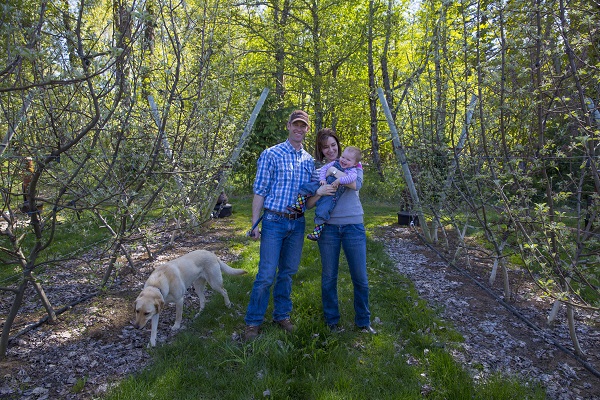
by Joni Kabana
With a newborn daughter, Ellison, the couple’s decision to leave their financially stable lives to move back to the family orchard in Parkdale felt edgy. “This put some stress on our relationship,” McCarthy said.
McCarthy was born and raised on the farm, and loved growing up there. “My mom says that of all my siblings, she never had to tone down my TV time because I was always outside.” He went on to study at University of California, Davis, and encountered a lot of people who grew up on family farms. “That changed my thinking,” he says. He decided to make farming his career.
A quarter of the growers in a room of 200 were young.
The McCarthy family farm dates back to his dad’s grandparents homesteading in Parkdale. Homer Rogers set up a small farm, and then built and ran Mt. Hood Inn beginning in 1912. McCarthy’s father, Mike McCarthy, moved back to the farm in the 1980s to take over—leaving a job at the primate research facility in Hillsboro.
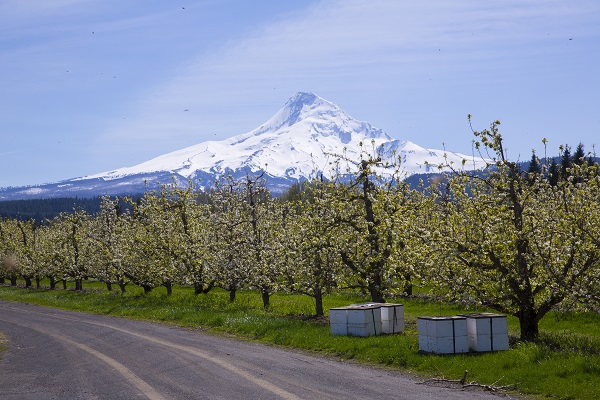
by Joni Kabana
He bought more acres and planted more trees. Today the 300-acre orchard produces about 3,000 tons per year of mostly pears bound for markets in Russia, China and South America.
Some farming issues span each generation—weather, labor and age. There always needs to be a new generation of farmers to supplant the aging generation. At regional grower meetings in Medford, Adam McCarthy, 34, was often the only person younger than 60. When he came back home, however, he was surprised. “We found a lot of young farmers in Hood River,” he said. “A quarter of the growers in a room of 200 were young.”
URBAN FARMER
The Side Yard Farm | Portland
ON A MAY MORNING, a handful of volunteers crawl over aisles of vegetables and herbs in Northeast Portland, harvesting radishes, green onions and herbs that will end up on plates at some of Portland’s finest restaurants later that day. Not much taller than July corn herself, Stacey Givens oversees her network of people washing, bagging and labeling the produce from The Side Yard Farm.
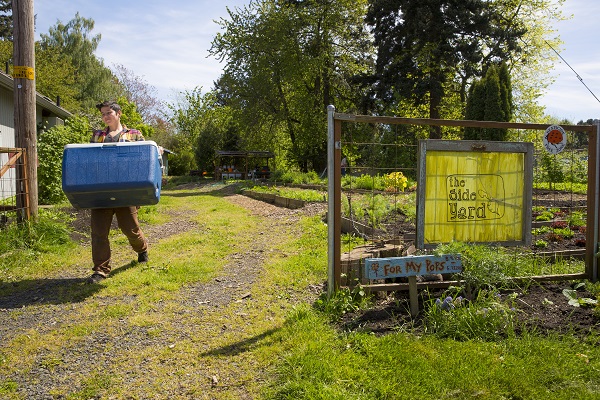
by Joni Kabana
Givens, 32, was the last of seven kids in a Greek family from San Pedro, California. She started cooking when she was 15 years old, watching her mom prepare Greek family meals from produce grown in their garden. In 2006, Givens was 23 and moved to Portland to attend the Oregon Culinary Institute. After graduating, she scored an internship at Millenium, an upscale vegetarian restaurant on the edge of San Francisco’s Tenderloin district.
The maturing food culture in Portland drew her back north. Givens started working in the kitchen at South Park Seafood Grill on Salmon Street in downtown Portland. “I got my ass kicked,” she said of her experience there.
This takes local to the next level.
People with Givens’ fire don’t stand still very long. She soon moved on to Rocket on East Burnside, and was a line cook and the liaison to the restaurant’s rooftop garden, where she benefitted from the expertise of Marc Boucher Colbert, the gardener for the restaurant. Alongside Colbert, she cultivated the experience that would lead to her own urban garden venture, The Side Yard Farm, spread across various small plots throughout the Cully neighborhood of Northeast Portland.
Today, with nearly an acre of gardens, Givens’ urban farm provides specialty vegetables and herbs such as mustard greens, turnips, egg plant, lemon verbena, salad burnette, papalo, shiso and lovage for fifteen restaurants in the Portland area. “I collaborate with a lot of people,” she said. “It’s hard for me to say no.”
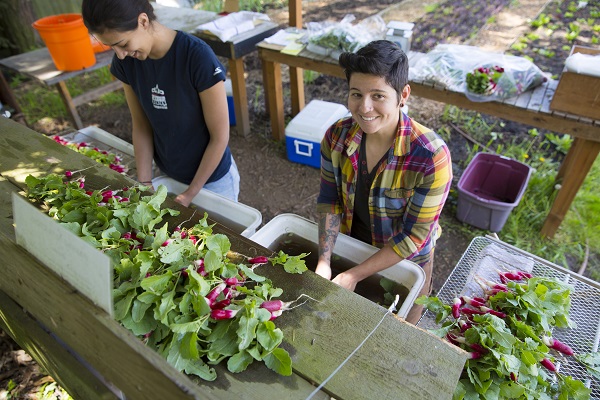
by Joni Kabana
Additionally, Givens takes her mobile trailer kitchen and a couple dozen complete strangers “into the middle of nowhere” for nomadic supper clubs. She’ll forage the surrounding fields and forests for food and flowers before cooking their meals.
“This takes ‘local’ to the next level,” she said. “I just totally dig it!”

by Joni Kabana
BIG COUNTRY
Wheat + Canola | Helix
When Tyson Raymond graduated from Willamette University in 2003, he swore he’d never go back to the family farm in Helix, a town of 184 people, a pub, a school and not much else. Now, looking over a 5,000-acre sea of green and yellow—wheat, canola and cattle pasture punctuated with dozens of wind turbines—that vow seems somewhat premature.
At age 23, Raymond was doing medical research at Oregon Health & Science University in Portland. “I got tired of working at a place I could see from my bedroom window and took an hour to get to,” he said.
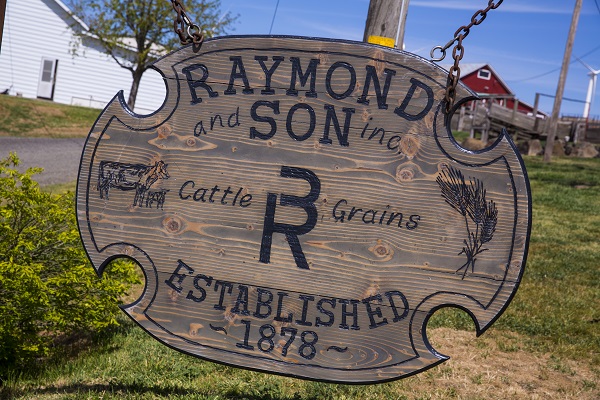
by Joni Kabana
Like a modern-day Jack Kerouac, he put a canopy on his pickup truck and, for three months across rural areas of forty states, he worked sugar beet harvests, hauled cows and fixed fences. Somewhere out there, beyond the traffic in Portland, was his future lurking in the back of his mind. “I had an epiphany that I could still be in medicine and not be in a city if I were a veterinarian,” he said.
My goal is to ensure that this farm is here for the next generation.
Then his dad called and said that the farm’s longtime hired hand was leaving. Perhaps it was the satisfaction of getting back outside to work on other people’s farms. Maybe it was his recalling of the safe feeling that he gets seeing a photo of him as a child asleep on the floor of his dad’s truck. “I thought about it for a week and decided to come back,” he said.
Now representing the fifth-generation of farming on this plot in northeastern Oregon, Raymond, 33, along with his wife, Kate, 29, and sons Uriah, 6, and Malachi, 5, face some of the same problems his predecessors did. “There are a lot of things you have to be good at—farming, being a mechanic, a welder, an agronomist, doing budgets,” he said. “The sheer amount of shit you have to be good at doing, the sheer weight of that as a young farmer is sometimes overwhelming.”
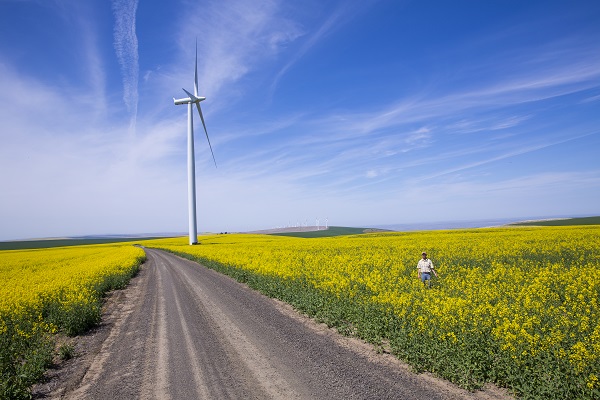
by Joni Kabana
His support comes from his wife, who helps manage her family’s Spring Valley Vineyards in nearby Walla Walla, Washington and from other young farmers in the area. “We’re fortunate to have a lot of smart young farmers here,” said Raymond.
Preparation for future young farmers is already in the ground. “Some farmers treat the land like it’s a cash machine and pull what they can from it,” said Raymond. “My goal is to ensure that this farm is here for the next generation.”
SUSTAINABLE
Rotational Farming | Corvallis
On the outskirts of Corvallis, the flat city begins to undulate in long soft rolls, like a picnic blanket being laid out.
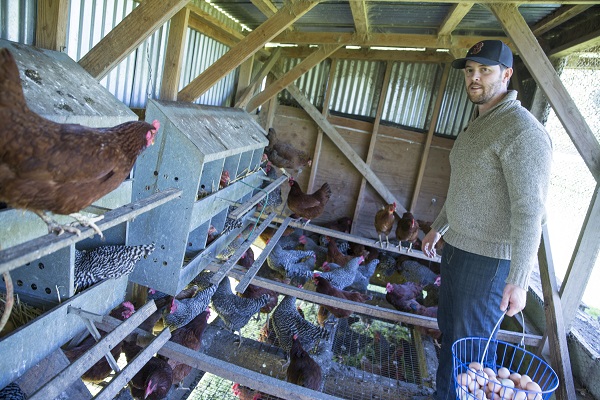
by Joni Kabana
To many people, this farm would appear fairly typical, but through its management, Alicia and Tyler Jones are leading a quiet revolution. “I think people are beginning to realize, to put it bluntly, that their food is killing them,” he said. “There’s an incredible disconnect between people and their food. Now more people are starting to look for food that is grown closer to home and is more healthy, and they’re buying from farmers who work with nature, not against it.”
Named Bald Mountain Farm after a nearby butte, the farm consists of eighty-five head of red Devon (grass-fed) cattle, fifty hogs, 2,500 broilers, 750 layers and 200 turkeys. “We raise end-product meat,” said Jones, 34.
Unlike at traditional feed lots, where farmers keep animals in small enclosures and fatten them on grain, these animals are pasture-raised in a rotational scheme designed to leave the land healthier for future generations.
people are beginning to realize … that their food is killing them.
Managed intensive rotational farming, made popular by Virginia farmer and author Joel Salatin, mimics what animals would do in the wild—eating and migrating. The health of the animal and the quality of the meat is largely determined by the quality of the pasture. Cattle graze on grass from a pasture. Chickens in a mobile coop, or “chickenmobile” are rotated through the same pasture to help fertilize the land.
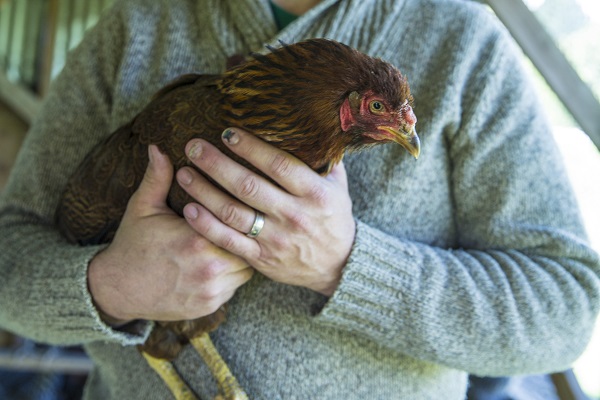
by Joni Kabana
Today, the Joneses bank on a community supported agriculture model built around organic meat and consumer convenience. Their CSA members can order what they want, in portions they can eat. Realizing that many people opt out of CSAs because they don’t have the freezer space to deal with so much fresh food all at once, the couple restructured their business so that members pick up smaller portions of meat once a month from the Joneses’ freezers on the farm or at a relative’s house in Portland.
Members go to the freezer locations, weigh their own shares and then record it in a notebook. “People feel more a part of the process,” said Jones.
Budding Farmers: An Oregon Resource Guide
Oregon State University
Small Farms Program
Classes and events targeting the education of novice farmers. Small Farm School is a one-day event with workshops for beginning farmers September 6 at Clackamas Community College.
smallfarms.oregonstate.edu
Oregon Farm Bureau Young Farmers & Ranchers
Open to beginning farmers and ranchers ages 16 to 35, this program is aimed at improving the communication skills of agriculture producers and connecting them to relevant issues at the state and national levels. oregonfb.org
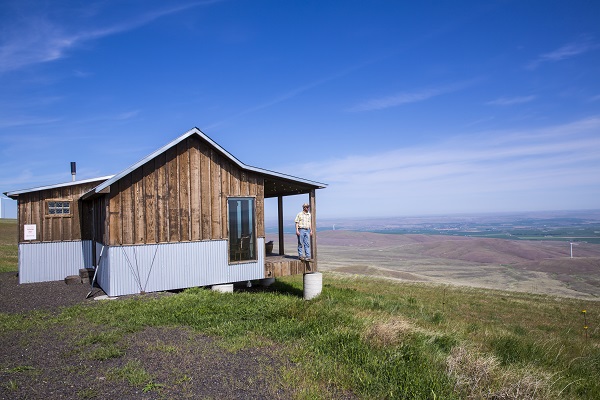
by Joni Kabana
Southern Oregon Farmer
Incubator Program
This three-year training program focuses on production of horticultural crops, crop planning, record keeping and organic certification. This program is a collaboration among OSU Extension Service, Rogue Farm Crops and Thrive, an economic development firm and Friends of Family Farmers. 541.776.7371
Southern Oregon Wine Institute at Umpqua Community College
A two-year Viticulture and Enology Associate of Applied Science degree introduces students to grape growing, soil science, vineyard and winery practices. umpqua.edu/sowi

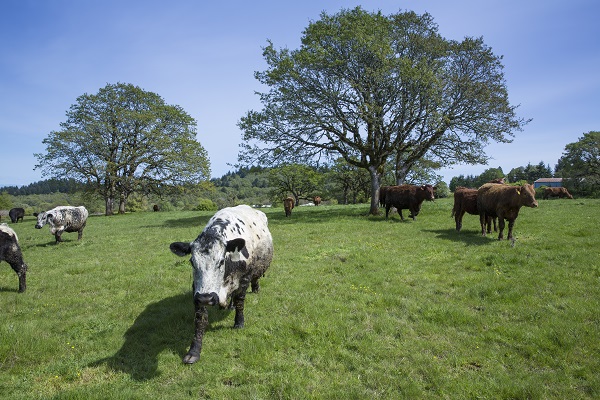
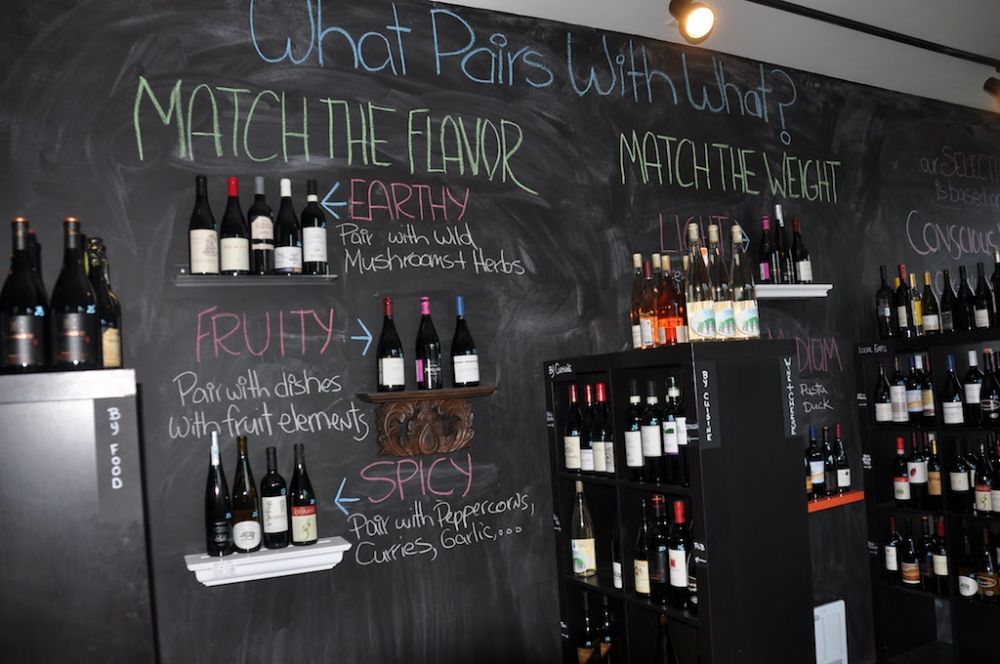
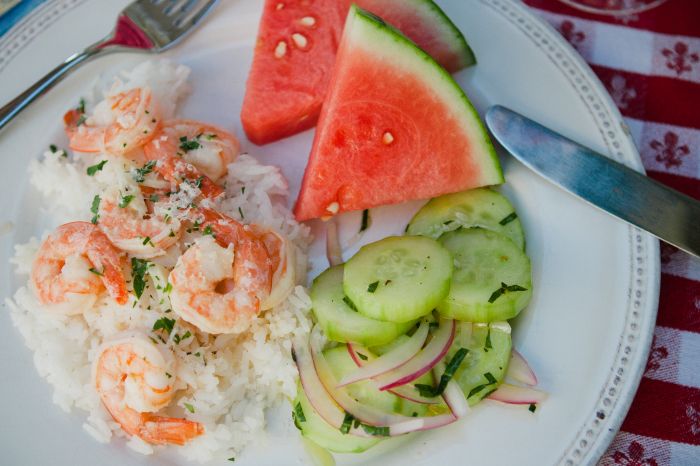





Great new farmer article and I appreciate your visits and in-depth interviews with these farmers. Of course I hope you will continue to explore and share this subject and include the Oregon Coast farms that supply farmers markets up and down the coast with delicious fresh food. I think your oversight is not uncommon and people do not see many farms that are quietly working to supply an area that is very isolated and in some cases has food deserts even when surrounded by seafood and fishing. The young farmers who grow food here are trying to keep up with demand from csa's and farmers markets, as well as trying to consider how to provide for restaurants with high demand like the Pelican Pub and other restaurants who would buy from them if scale could be met.
Please take a look at coast farmers. You can learn more through North Coast Food Web in Astoria, Food Roots in Tillamook, Ten Rivers Food Council in Newport. All these have participated in a three year program to organize farmers in an effort by Oregon Food Bank (Sharon Thornberry) and Meyer Memorial Trust to grow food here as it was done in the past very successfully. See corvuslanding.com and revolutiongardens.com for a sample.
Thanks for your good work and beautiful magazine!